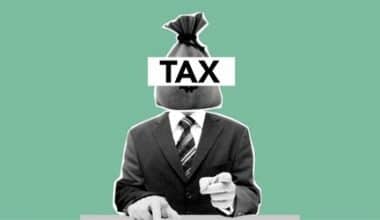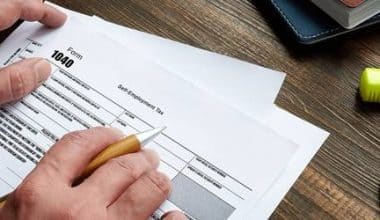When the time comes to release a lien, it’s critical to ensure that the lien release form is appropriate for the situation and that it complies with state law. If a lien has been placed on your property to secure payment under a building contract, you must obtain a lien release once payment has been received. If you had a loan at a failed bank that you paid off and the bank’s lien on your property was not released, we may be able to help. In this guide, we will discuss all on a lien release including how to get one, for a car or house, held in either a closed or failed bank. Let’s get to it.
What is a Lien?
A lien is a claim or charge placed on property to secure payment of a debt, obligation, or responsibility owed to the lender. The lender is the institution that made the loan. The lender will record the Deed of Trust or Mortgage paperwork in the public records with the appropriate agency in the county where the property is located. When the debt is repaid, the lender shall produce a recordable lien removal paperwork. It is critical that you record the lien removal instrument with the same county agency that recorded the original Deed of Trust or Mortgage.
Types of Liens
The type of lien release you will receive is determined by the type of property, house or car involved and who filed the original lien. A mechanic’s lien release, an IRS lien release, a mortgage lien release, and a partial lien release are the four most prevalent types of lien releases.
#1. Mechanic’s lien release
A mechanics lien release, also known as a contractor’s lien release, is filed while a contractor is awaiting payment on a project. This lien is frequently filed on real estate, and the lien removal instrument is normally created and agreed upon when the contract is formed.
#2. IRS lien release
IRS lien releases are utilized when the IRS files a lien on a party’s assets. The release will not be provided until the debt is settled.
#3. Mortgage lien release
When a person obtains mortgage financing for a home, the lender owns the property until the debt is paid off. Once the payments are completed, the homeowner can apply for a lien discharge on their property.
#4. Partial release of lien
After making tiny payments against the overall loan debt, a partial lien removal is filed. This sort of release is more commonly utilized between a contractor and a subcontractor. The lien will remain on the property, but at a lower sum to reflect the payments made.
What is a Release of Lien?
A release of a lien, also known as a lien release, is a legal instrument that removes a previously filed lien on a property, car, or other asset.
When one party owes another party money, a lien is filed as collateral. If the debt is not paid, the party who filed the lien has the legal authority to seize and sell the debtor’s property to satisfy the debt. When a debtor pays their debt in full, the party who filed the lien must release the claim. It is critical that the debtor receives the correct lien release to ensure that they are the lawful owners of their property, house or car.
If the person that filed the lien fails or refuses to release the lien, the owner of the property, house, or car can take legal action and file a lawsuit to compel the removal of the lien.
What is the Difference Between a Full and a Partial Release?
When a lien is filed, it specifies the amount owed to the contractor. If the specified sum is paid in full, the contractor should file a full removal of the lien. This results in the lien being totally removed from the property.
Depending on the conditions of the contract, the property owner may pay the contractor in installments when the stages of the work are finished. As the installment payments are received, the contractor may partially release the lien. A lien remains on the property with a partial discharge but for a lower sum.
What Information is Included in a Release of Lien?
The information required in a release of lien will differ according to the type of lien, who filed it, and the type of property in question. Although various forms will differ, the same essential information will be requested, including:
- Names and information of both parties
- Description of the property subject to the lien
- Total amount paid
- Date of payoff
The lien release document should also include the original lien’s filing information, such as the date the lien was filed, the county it was filed in, and all identifying and recording numbers issued to the original lien.
It is vital to note that the lien release must be filed in the same county as the original lien.
How to Get a Lien Release for a Car or House
The simplest way to obtain a lien release from a car or house is to pay off the sum owing to the lienholder. The method for a lien release varies depending on the type of lien, which can be beneath a vehicle or a car, and the residence, property, or asset that the lien entails. Local laws will also influence how lien releases are achieved, thus it is best to speak with a professional lien lawyer who is familiar with local liens laws.
Step #1: Prepare the correct forms
The forms to release your lien will vary depending on the type of lien, which might be under a vehicle or a car, and the type of house or property. In the case of a contractors or mechanics lien, the form is normally written when the contract is made.
If you want to release a lien on an automobile, the lender will usually mail the release once the payment is paid in full. After the final payment, the title and lien can take up to thirty days to arrive. If you do not receive the lien from your lender, your local DMV will most likely have special documents to fill out.
Step #2: Signatures
To be legitimate, all parties must sign and date a release of lien. Most states demand that this paperwork be notarized as well.
Step #3: File the release of the lien
A lien release, like a lien, must be filed. For real estate, this will be submitted to the county recorder, however, for cars, you may only need to file the document with the DMV.
It is critical that your release of the lien document is accurate, correctly filled out, signed, notarized, and filed with the relevant entity. To avoid mistakes, we recommend hiring a contract or real estate lawyer.
Should you Use a Conditional or an Unconditional Release?
A problem can occur when the property owner refuses to make the final payment until the lien is released, and the contractor refuses to release the lien until the final payment check has cleared. A conditional release of the lien may be able to remedy this predicament. A conditional release will mention that it is subject to payment clearing. If the cheque does not clear, the lien is renewed.
If the property owner attempts to sell or mortgage the property, a conditional release informs a possible purchaser or lender that additional inquiry is required to establish whether the property is free of the lien.
An unconditional release, on the other hand, completely removes the lien from the property, with no chance of it being re-established. The type and form of a lien release will differ based on the state’s law where the property is located and whether full or partial payment is made.
How to Get a Lien Release From a Closed Bank
How do you obtain a lien release from a bank that has been closed? If you have a car for which you have paid off a loan and either lost the title or did not receive it from the bank, you will need to obtain a replacement title.
However, in many circumstances, the lien on the vehicle title record will prevent this from happening. How do you obtain the paperwork required for a lien release if the bank is closed Let us examine these steps:
#1. Verify the lien status
The first step is to ensure that the lien is in the DMV’s system. When the lien is paid off, the bank will sometimes notify the DMV. In this instance, you can just purchase a duplicate title. Even if it’s in their system, you’ll need to double-check that the bank is indeed closed. It doesn’t mean they’re out of business just because they’re no longer at that location or don’t answer the phone.
It means they may have relocated, changed names, been acquired by another bank, or amalgamated with another bank. If this is the case, they can offer you with a lien removal letter if they moved, changed names, or were bought out by another bank or moved to a new site. They will not be able to issue you a new title, but the DMV will if you have a lien removal letter from your lender.
#2. Use the Secretary of State database
What if the bank goes bankrupt? In many circumstances, you can contact the Secretary of State to find out who the registered agent for that bank is. In many circumstances, the bank will keep its corporation operating so that the registered agent can submit lien releases or other papers on the bank’s behalf. If the merging bank or registered agent no longer has access to your files, they can give a letter of non-interest.
Even if the bank is closed, you can still get your lien freed. If your title shows a lien, it’s critical to have it removed as soon as it’s paid off. Until the lender is removed from the title, they retain a security interest in your vehicle or property.
How Do I Remove a Lienholder From My Car Title in Illinois?
To remove Lienholder, follow these steps:
- Submit a lien clearance letter from the lienholder indicating that the lien has been paid in full
- Submit a lien contract stating that the lien has been paid in full
- Submit a court order directing our office to issue the duplicate title without the lien or lienholder’s name.
Does a Lien Affect Credit Score?
While liens do not appear on your credit record, failure to pay debt might have a negative impact on your credit score. And this may make it more difficult to obtain loans and credit in the future.
How Do You Get a Lien Removed From Your Account?
Request a Release-of-Lien Form – After you have completely paid off your obligation, the creditor will file a release-of-lien form. This will serve as proof that the loan has been paid and will formally relieve the lien from your property.
How Do I Prove I Paid off My Mortgage?
A deed of reconveyance is a document that proves you have paid off your mortgage. It removes the lender’s lien from your property. When you sell your house, you’ll need this paperwork to establish that you have a clear title.
How Long Does a Lien Stay On Your Property in New Jersey?
A judgment lien in New Jersey is connected to the debtor’s property for 20 years (even if the property changes hands).
How Do I Remove a Lien From My Credit Report?
Paying your tax bill in full is the simplest approach to removing a lien. If you are unable to pay in one lump sum, there are short-term and long-term payment plans available. A short-term payment plan asks you to pay the amount outstanding within 180 days and has no startup cost. A long-term plan necessitates monthly payments.
What Is an Example of Lien?
For example, if a person buys a car, the seller will be paid with borrowed cash from the bank. As a result, the bank would be awarded a lien on the vehicle.
What Happens When the IRS Puts a Lien on You?
A lien secures the government’s interest in your property if you do not pay your tax debt. A levy actually takes the property to satisfy the tax bill. If you do not pay or make agreements to satisfy your tax burden, the IRS has the authority to levy, seize, and sell any form of real or personal property in which you possess or have an interest.
Conclusion
Typically, your lienholder is compelled to release your title once the loan has been paid off. Unfortunately, this is not always the case. The fact that your loan has been paid does not mean that the lien has been released; you may still need to go through the car lien release process and notify the DMV of the satisfied debt.
Related Articles
- COLLATERAL FINANCE: Definition, Examples, & Types
- RELEASE OF LIEN: Understanding How Lien Release Work
- TAX LIEN SALE: +Guide for Lien Sale Cars
- WHAT’S LIEN: Meaning, How it Works and What It is Used for
- RELEASE MANAGER: Definition, Job Description, Salary & How to Become One






